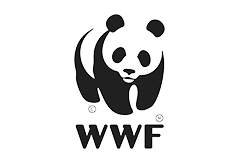The CIHR is comprised of the following seven international conservation organizations.
For more information about each of the members, read their short bio and then click on their logo to be taken to their website. For more information about the CIHR as a whole, please visit the About section.
BirdLife International
BirdLife International is the world’s largest nature conservation partnership. Together we are 119 BirdLife Partners worldwide – one per country or territory. The BirdLife Partnership strives to conserve birds, their habitats and global biodiversity, working with people towards sustainability in the use of natural resources.
Conservation International
Conservation International was founded in 1987 in order to ensure a healthy, prosperous world in which societies are forever committed to caring for and valuing nature, for the long-term benefit of people and all life on Earth. Learn more about how we respect the rights of people we work with.
Fauna & Flora International
Founded in 1903, Fauna & Flora International (FFI) is the world’s longest-established international conservation organization. Our vision is a sustainable future for the planet, where biodiversity is effectively conserved by the people who live closest to it, supported by the global community. Learn more about our approach to working with indigenous people and local communities.
International Union for Conservation of Nature
IUCN – International Union for Conservation of Nature is a membership Union uniquely composed of both government and civil society organizations. Created in 1948, IUCN has evolved into the world’s largest and most diverse environmental network. It harnesses the experience, resources and reach of its 1,300 Member organizations and the input of some 16,000 experts grouped in its six expert Commissions: Species Survival, Environmental Law, Protected Areas, Environmental, Economic and Social Policy, Ecosystem Management and Education and Communication.
The Nature Conservancy
The Nature Conservancy (TNC) was founded in 1951 and works to protect the lands and waters on which all live depends. TNC’s work, addressing global conservation priorities at the intersection of people and nature, including climate, water, lands, oceans and cities, is rooted in sound science; non-confrontational and pragmatic solutions to conservation challenges; and partnerships with indigenous peoples, local communities, businesses, governments, multilateral institutions and other non-profits. TNC is supported by more than 1 million members to work on a scale that matters and to implement solutions that endure.
Wildlife Conservation Society
WCS was established in 1895 as the New York Zoological Society. We envision a world where wildlife thrives in healthy lands and seas, valued by societies that embrace and benefit from the diversity and integrity of life on earth. Learn how we partner with indigenous people and local communities.
World Wide Fund for Nature
WWF is one of the largest conservation organizations, founded in 1961 to stop the degradation of the planet's natural environment, to build a future in which humans live in harmony with nature and the natural resources of our planet are shared equitably. WWF recognizes human rights as central to achieving effective, equitable conservation and development outcomes, and works to strengthen mainstreaming of human rights, Indigenous Peoples' rights and empowerment of local communities and civil society. Learn more about WWF's engagement with indigenous peoples and local communities.
📷 Photo credits: Tanzania - Benjamin Drummond















